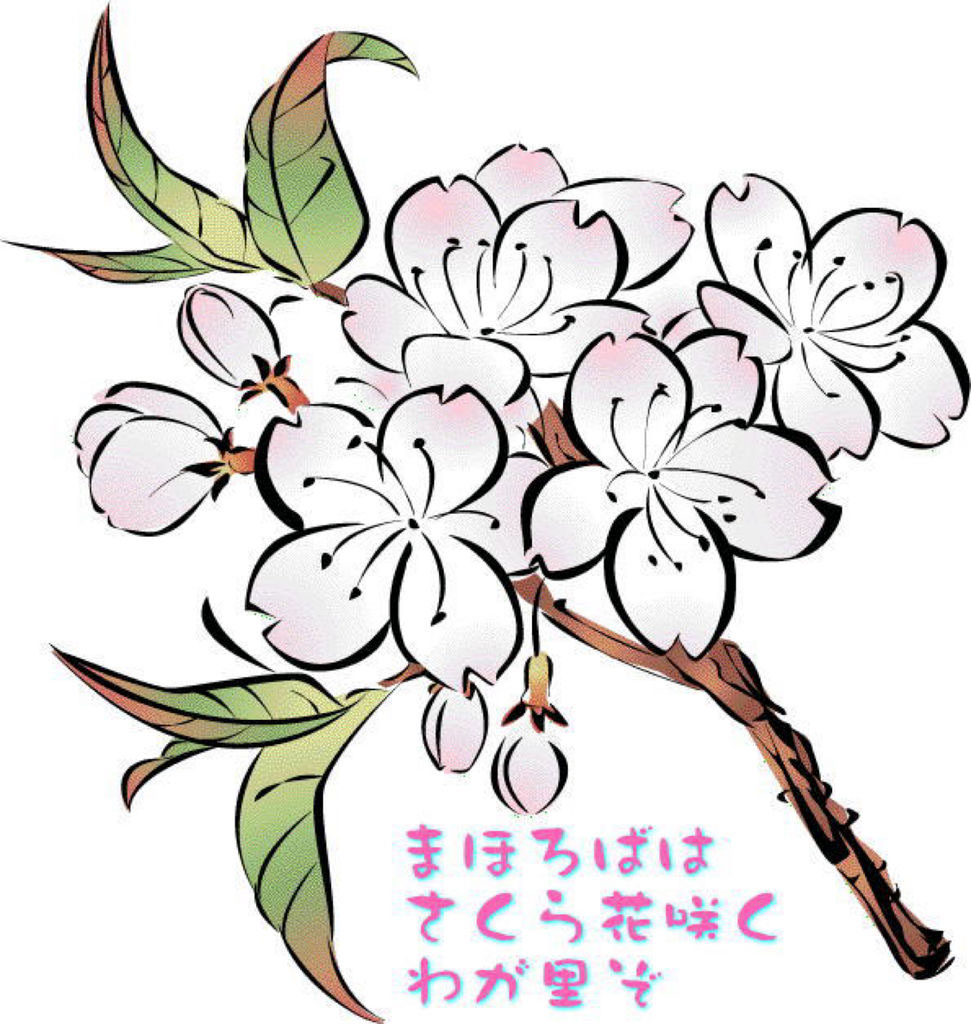
When we speak of cherry blossoms, we think of Saigyo. Speaking of Saigyo, here is his next poem:
“I would wish to die
Under the cherry blossoms
In springtime’s embrace
At that moment of perfect beauty
When the moon is full”
On February 16, 1190, Saigyo peacefully drew his last breath while gazing at cherry blossoms at the Hirogawa Temple in Kawachi (now Kawanancho, Osaka Prefecture). He was 73 years old. His graceful departure, just as depicted in his poem, left a deep impression on people and has been passed down through generations, especially among poets. The cherry blossoms he mentions are not the Somei Yoshino variety but the mountain cherry blossoms, which typically bloom later than Somei Yoshino. February 16, the day of Saigyo’s passing, corresponds to mid-March in our calendar. Moreover, when we say “Mochizuki,” it falls on the day of the full moon, which falls on March 25th this year. The cherry blossom season in Osaka Prefecture started on the 29th of March this year, with full bloom expected about a week later. The Hirokawa Temple is located on the hillside of Osaka Prefecture, so the mountain cherry blossoms there would bloom even later. Therefore, the environmental conditions on the day of Saigyo’s passing would be quite different from this year. Cherry blossom blooming patterns vary each year, and the natural environment during Saigyo’s time would have been significantly different from today. Hence, I believe Saigyo’s poem remains valid as it reflects the prevailing conditions of his time. As for Saigyo’s death, religious scholar Tetsuo Yamazaki suggests that Saigyo, around February 15, the day of Buddha’s death, decided to end his life and, after several days of fasting and abstaining from water, passed away of his own volition. It is a theory worth considering.
桜と言えば西行。西行と言えば次の歌です。
願はくは 花の下にて 春死なむ そのきさらぎの 望月のころ
西行は1190年2月16日、河内の弘川寺(大阪府河南町)で桜を見ながら静かに息を引きとりました。享年73。歌の通りの見事な最期は人々に感銘を与え、歌人をはじめ、多くの人達によって語り継がれてきました。花とはもちろん桜ですが、西行の言う桜はソメイヨシノではなく山桜です。山桜は普通ソメイヨシノより遅れて咲きます。西行が亡くなった2月16日は今の3月中旬頃です。しかも望月と言うことになると満月の日ですから、今年であれば3月25日に当たります。今年の大阪府の開花が29日であり、満開は1週間後でしょうし、山桜が満開になるのはその後です。しかも弘川寺は大阪府では山手にありますから、山桜が満開になるのはさらに遅れるでしょう。と言うことになれば、西行の亡くなった日の環境は今年とは随分異なることになります。桜の開花状況は毎年異なりますし、西行の生きた時代と今とでは、自然環境も随分異なるでしょうから、西行のこの歌も通説通りでいいと思います。ちなみに西行の死について、宗教学者の山折哲雄氏が、西行は釈迦の命日の2月15日ごろに自分も死のうと決断し、そのために幾日も断食・断水をし、自らの意思で絶命したと言う説を唱えています。傾聴に値する説です。
